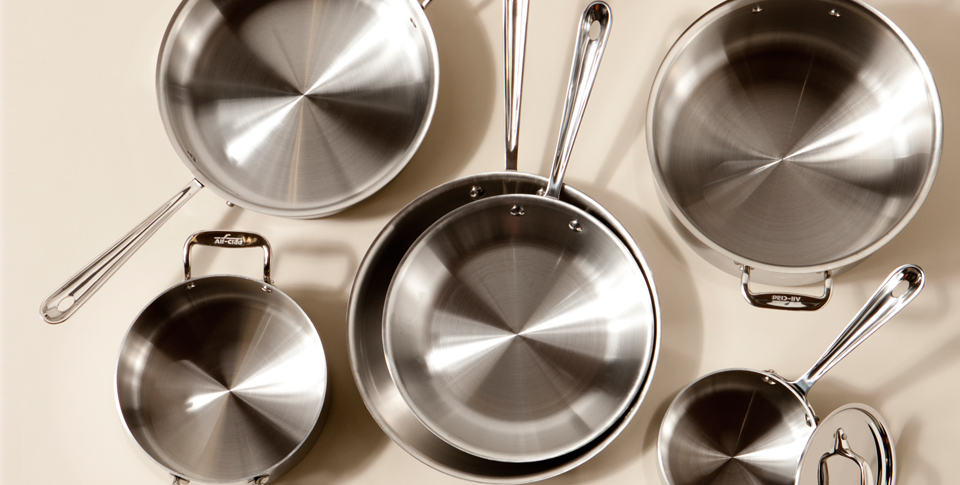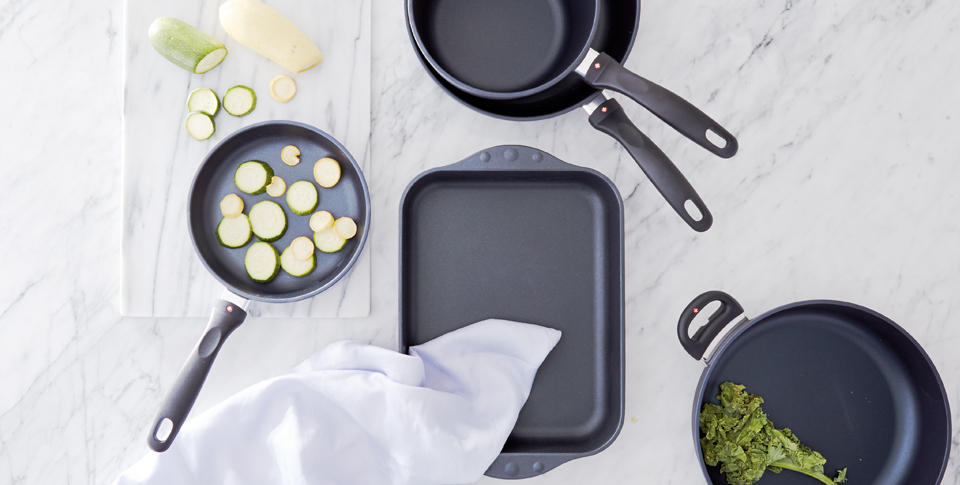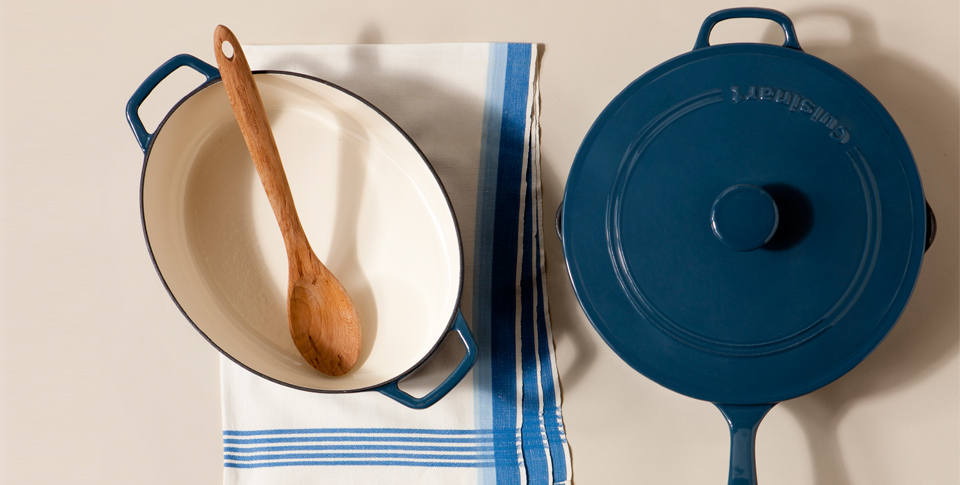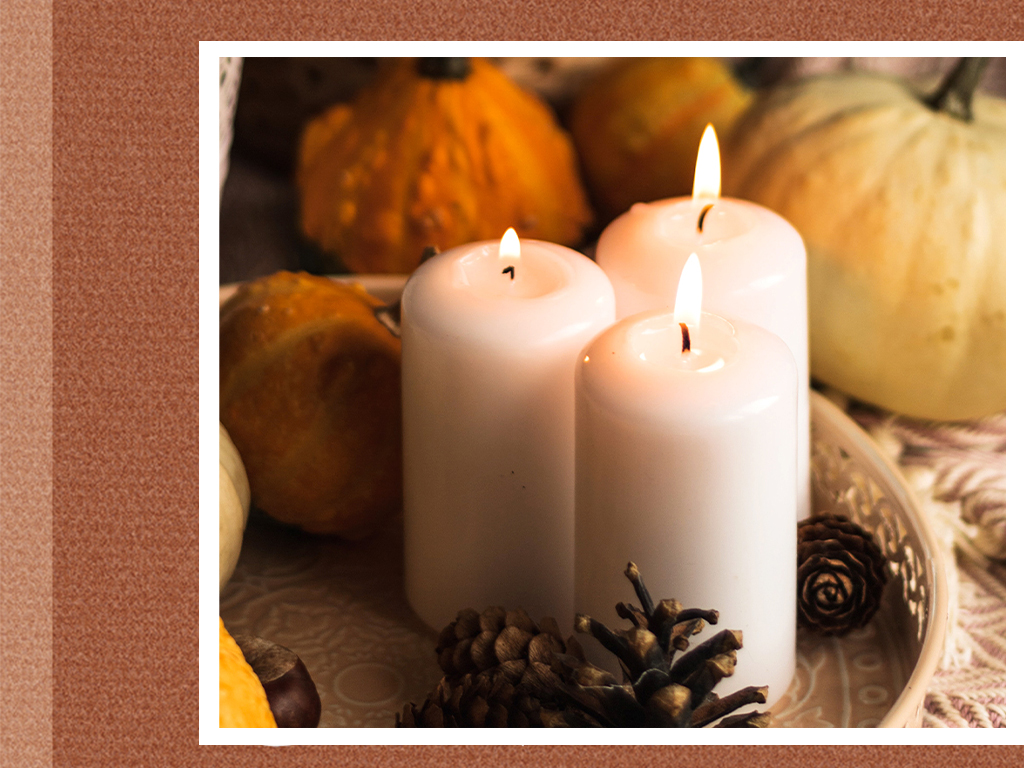Whether you’re a braise-and-sear kind of cook or you keep health in mind, we’ve outlined the benefits – and a few things to be mindful of – for each. So, do your research, then get choosing. That stack of cookbooks is begging to be cracked.
Stainless Steel
Durable. As in, corrosion-, scratch-, and warp-resistant.
Nonreactive. Unlike copper or aluminum, stainless steel will not affect the taste of food (even if it’s acidic, like with tomatoes).
Display-worthy. Clean it regularly, and it will keep its shiny chrome color.
Watch out for: Single-ply bottoms. Stainless steel doesn’t have the natural ability to properly distribute heat unless it’s bonded with other metals or additional steel layers.
Nonstick
Lightweight. Flip omelets with ease.
Diet-friendly. Go ahead and skip the oil or butter.
Easy to clean. Soap, warm water, and a soft sponge is all it takes.
Watch out for: Scratches. Use plastic utensils to keep from damaging the nonstick coating.
Cast Iron
Long-lasting. That skillet from your grandmother’s house? Clean it and get cooking.
Inexpensive. It may be a bit of an eyesore, but cast iron beats those gleaming pieces in price.
Multipurpose. Transfer from stovetop to oven without a second thought.
Watch out for: Weight and maintenance. Always use two hands – cast iron is heavy. But with consistent cleaning, it will last for decades.
By Brianna Lapolla, Associate Editor
![]()






